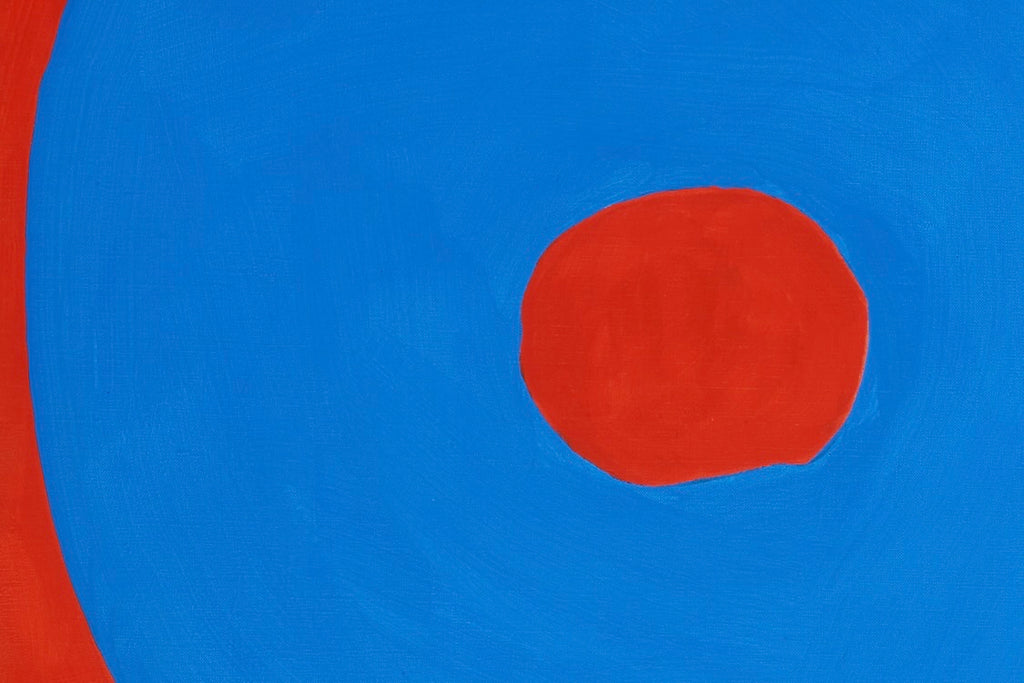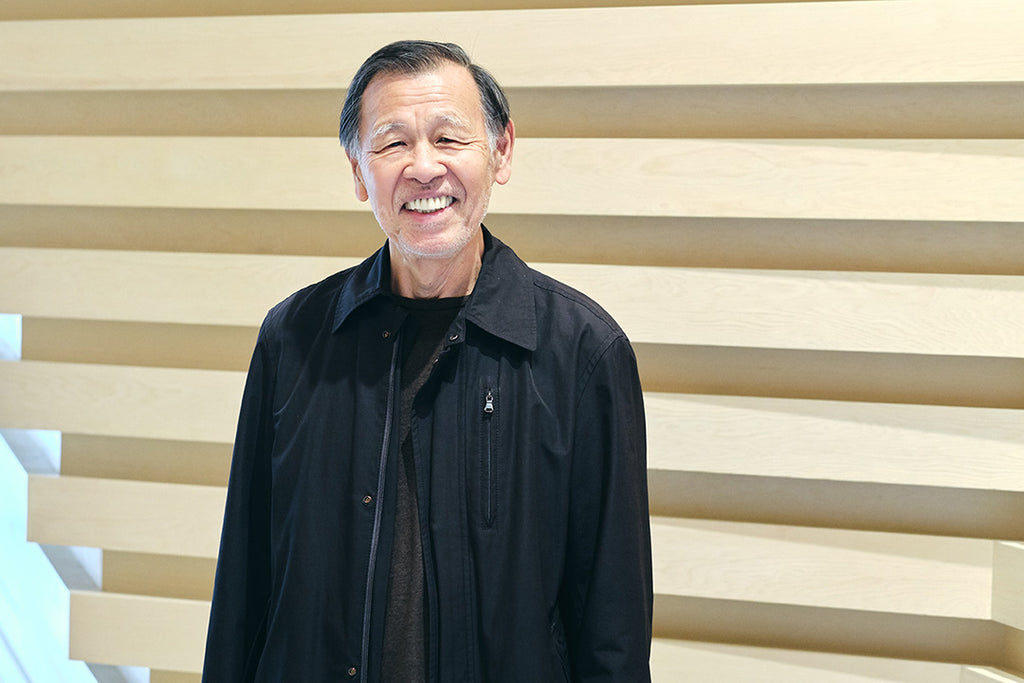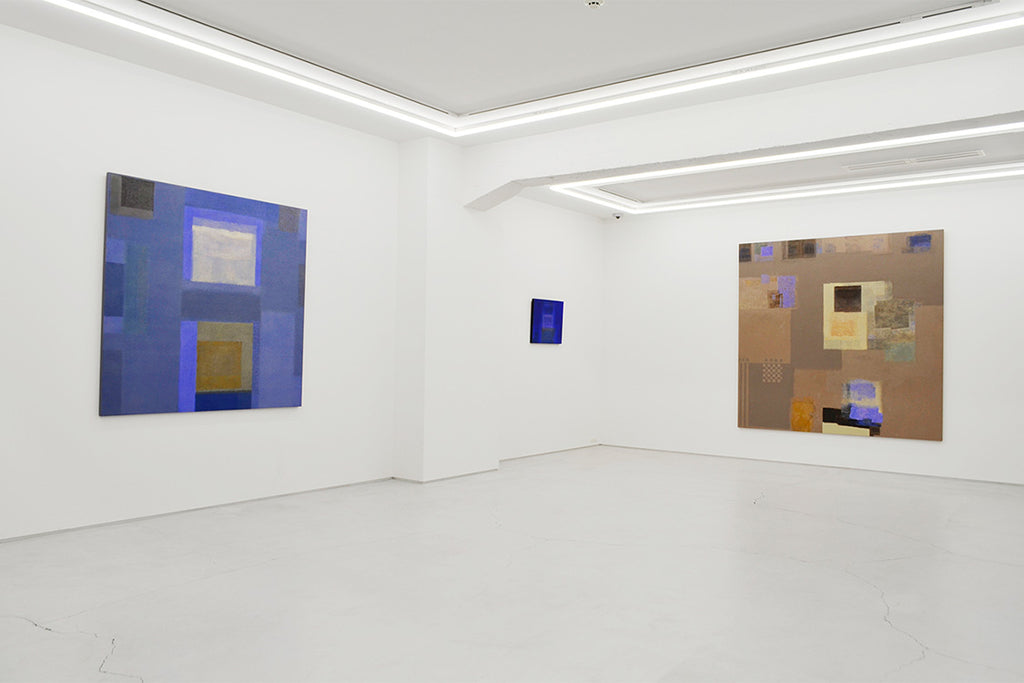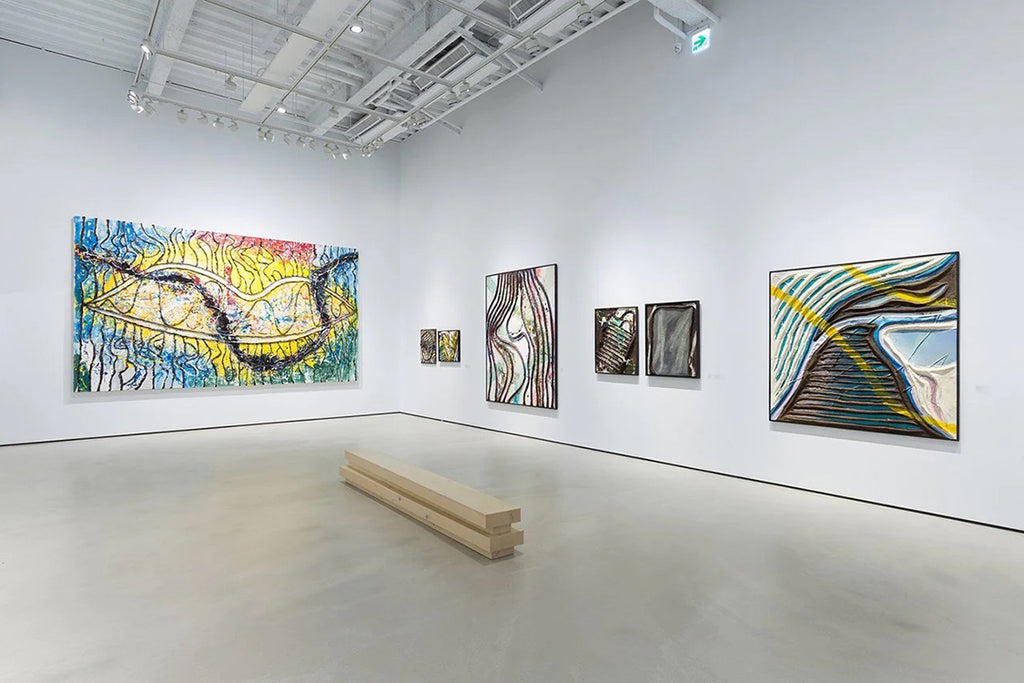ARTICLES
Ay-O Why Rainbows?
A New Appreciation Contemporary Japanese and Asian Art
13/23

Installation image, Karuizawa, 2019
In our ongoing series, we present the digital archive of the book 'A New Appreciation Contemporary Japanese and Asian Art' This book delves into internationally acclaimed artists and the dynamics of the Asian art market. The thirteenth installment introduces Ay-O.
Ay-O Why Rainbows?
Kunio Motoe
Professor Emeritus, Tama Art University; Art Critic
A Sixth Sense
An ‘evaluation’ is an arbitrary explanation or interpretation of a certain person or thing. It involves countless errors, omissions, and even intentional misrepresentation. Referring to Ay-O as ‘The Rainbow Man’ is not necessarily mistaken but it is important to understand that this gifted avant-garde artist who emerged from the chaos of post-war Japan as an avant-garde artist is not sufficiently defined by rainbows. It is important to consider when, why, and how Ay-O’s rainbow motif came into being. To understand that, and to appreciate this artist properly, it is necessary to explore Ayo’s starting point. Despite being well-known, Ay-O has not been given the legitimate evaluation and appraisal he deserves.
Ay-O (his real name is Takao Iijima) was born in Ibaraki prefecture in 1931. Given that he exhibited in the Yomiuri Independent Exhibition, the most avant-garde venue of the time, and that he joined the Democratic Artists Association organized as a free and egalitarian movement by modernist Ei-Q, it was natural that Ay-O would abandon the stability of a career teaching junior high school and head for New York, the newly emerged center of the avant-garde at the time, in 1958.
Ay-O’s initial works were influenced by Abstract Expressionism, a movement at its height in New York at the time, and gained some degree of recognition. Ay-O, however, was not satisfied and was more intent on expressing himself by whatever technique. He felt that the prevailing trends in painting were like jumping in a river and splashing around . ‘splashes on canvas simply for emotional expression do not produce any sort of objective proof.’ Ay-O was after something extraordinary in order to shake off conventions of the past. It became his mission to identify his own ‘sixth sense,’ beyond sight, sound, touch, taste, and smell. He later said that ‘ready-made’ objects inspired him. His pursuit was cutting-edge. This is clear from his involvement with the Fluxus movement and Lithuanian American artist George Maciunas.

Ay-O in front of one of his works
Questioning Human and Social Fundamental
Ay-O’s developing inclination towards materiality overlapped with John Cage’s 4’33. The idea of a pianist sitting at the piano without touching a key impressed Ay-O profoundly. He said he felt he was born at that moment. It is difficult to assess the intersection of Ay-O’s ‘concrete materiality’ and the metaphorical presentation of emptiness as ‘a pianist who doesn’t play’ (or, following author Atsushi Nakajima, an archer who forgets his bow). Materiality, emptiness, nothingness . how can these relate to each other if they refuse a Zen dialogue? The correct answer is elusive, but it is certain that Ay-O viewed the ‘rainbow’ impartially rather than as something awesome. This is at the root of his intuitive understanding of the question.
Materiality, emptiness, nothingness. When two things appear at first glance to differ, there are two possible disparate notions. The first is to deny connection. The second, and the position of Ay-O, is to find the relation at some deep level. Ay-O’s highly regarded Rainbow No. 3 Venice Tactile Room illustrated this briefly at the 1966 Venice Biennale. There is a conflict in the coexistence of the visual sense of a ‘rainbow’ that fills and dominates a space and the tactile sense of sixty-five finger boxes with unknown contents attached to a wall. M.R. Sullivan’s observation, in his Sculptural Materiality in the Age of Conceptualism (Routledge, 2016), that the amount of press coverage Ay-O’s Tactile Room generated reflects just how controversial this work was. According to the New York Times ( July 4, 1966) the mechanism inside the boxes, in particular, were problematic and security had to be placed around the installation.
Ay-O he felt nature, and the origin and infinity of the universe, in the rainbow that did not exist in artificial lines. This surprisingly resembles the concept of Yves Klein’s monochromatic painting. Ay-O remarked, ‘Lines travel through infinity but color is infinite. I experience the full alignment of the universe through color and feel truly free’ (1958). His fundamental position applies also to objects. Ay-O noted that attaching personal objects, created by himself, to canvas, was about the starkness of death rather than about freedom. Even if not successful, Ay-O’s placing of objects was a way for him to stimulate ideas. It was a stunning flight of artistic perception. The suspended objects existed in their ability to halt judgment. The depth of Ay-O’s concept, his questioning of the nature of human life and human society, should be given more attention.
Kunio Motoe

Born in Matsuyama City in 1948. Attended kindergarten in Tokyo, and elementary and middle school in Hokkaido (Sapporo and Otaru). After graduating the University of Tokyo Department of Art History in 1976, he joined the National Museum of Modern Art, Tokyo where he curated large-scale retrospective exhibitions of Matisse (1981), Picasso (1983), Gauguin (1987), and Redon (1989), as well as the international group exhibition Metaphor and Symbols (1984), and contemporary art exhibitions featuring Tesuka Osamu (1990), Kuroda Aki (1993), Kimura Chuta ((1994), Tatsuno Toeko (1995). He became Professor at Tama Art University in 1989, and Professor Emeritus there until 2019. He served as Director of the Fuchu City Museum of Art from 2001 . 2009. He died in June 2019. Major publications include What is Beauty: Discovering 20th Century Art (Heibonsha, Inc.), The Way of Painting (Skydoor, Inc., Odilon Redon: Seeds of Light (Misuzu Shobo, Inc.), Contemporary Japanese Painting (Misuzu Shobo, Inc.).
Book Information
Title: A New Appreciation Contemporary Japanese and Asian Art (English Edition)
Publisher : Whitestone Co., Ltd.
Release Date : February 26, 2020
*Information in this article is at the time of publication.
ARTIST

被稱為「彩虹藝術家」的靉嘔打破繪畫的輪廓線條,利用彩紅光譜的色相取代各種圖樣。此外,以觸覺為首的知覺藝術之實驗、在國際前衛藝術運動「激浪派」的活動,及終其一生持續進行的版畫製作等活動皆具有靉嘔的特色。另外,靉嘔也在各地展開為現今偶發藝術及裝置藝術的先驅──環境藝術。
於1961-62年製作的《Hydra》是以圓柱形鋁製主體及燈泡製成的裝置,其六個燈籠會讓人聯想到在希臘神話中出現的多頭蛇Hydrā。燈籠內部的燈泡散發人工光芒,因熱度產生的上升氣流有著如螺旋槳般的作用,使得在燈芯上安裝轉軸的燈籠本身也受到自然現象的影響而旋轉。從其中溢出的光芒因燈籠的旋轉以及作品本體的鋁板表面產生的反射,除了因研磨而浮現出會讓人聯想到蛇在相互交纏的流動圖案之外,在展覽室的牆壁與天花板也產生光之奇觀。展出《Hydra》的第五展覽室前半部的環境、事物,就連鑑賞者本身也被此裝置營造出的光之空間所包圍,成為靉嘔的環境藝術與環境的一部分。



